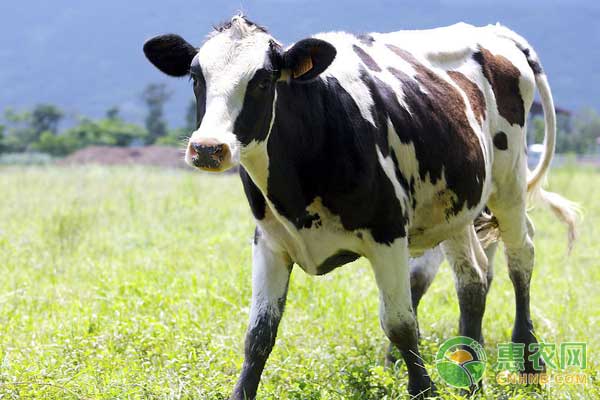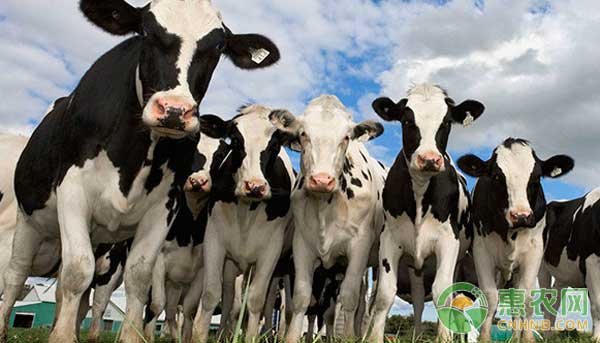Dairy products are one of the indispensable agricultural and sideline products in people's daily life. If people eat milk products that have high-risk disease cows, they are very susceptible to infection. The high metabolism of dairy cows leads to weak disease resistance. It is extremely difficult to prevent and control the high-risk disease of dairy cows in the process of high-density concentrated breeding in the form of modern centralized farming. Therefore, it must be done during the feeding process of dairy cows. Good prevention and control of high-risk diseases.
I. Overview of cows with high-risk diseases
Cows with high-risk diseases can endanger human health. Animals and their products (meat, milk) that are infected with diseases have serious food hygiene and safety problems. Potential pathogens can be cross-contaminated between humans and animals. The positively detected individuals have a very high rate of death, in which the rate of inferiority of the breeding stocks is 100%, and the rate of death of pregnant females and newborn young animals is high, and the mortality rate is close to 50%. The substantial increase in the cost of drug control in the aquaculture process has resulted in a serious discount on farming profits. The history area (field) is difficult to achieve purification goals for a long time, and the risk of recurrence of historical diseases is often cyclical and epidemic.

Second, the main disease prevention and control measures
1. Strengthen anti-epidemic inspection, strengthen quarantine inspection and immediate isolation management measures, prevent the disease from breeding sources, reduce the outbreak of diseases by controlling the source of infection, cutting off the transmission route, and protecting susceptible populations from infection. Probability and reduce the economic loss caused by illness. The self-propagating and self-supporting feeding method is the first principle. In the case of unavoidable circumstances, it can be considered to raise the breeding, but the introduction should be carried out from the non-epidemic area to select the formal qualified cattle breeding field and strictly carry out the quarantine work of the production area to ensure health. No epidemic, good introduction, after the introduction of the herd, it is necessary to carry out isolation observation and breeding for more than 45 days. After the quarantine period, the quarantine will be reared after the quarantine.
2, strengthen feeding management
Strengthen the safety control of the inside and outside of the farm, focus on the disinfection of the vehicles at the entrance and the mobile workers, limit the line of the field and eliminate the four evils; and timely manage the cleaning, disinfection and source management in the cattle house, and maintain it for a long time. The cattle farm (house/column) is clean, dry, sterile, well ventilated, air quality is up to standard, good lighting and other benign livable environments, and reasonable limits and uniform management should be adopted along with the breeding process to minimize the health of cattle. Incidence of infection. Disinfection work is a particularly important measure in feeding management. It should be paid attention to in daily management. Whether the disinfection effect is completely related to the success or failure of epidemic prevention work is also related to whether the whole farm pathogen can be completely eliminated and whether the transmission route can be Thoroughly cut off. Therefore, in the whole farming work, China must put the disinfection work at the forefront.
3, there are plans to immunize
Immunization is one of the important measures to prevent and control animal infectious diseases. The planned immunization can effectively prevent and control certain infectious diseases of dairy cows. Common vaccines for cow vaccine prevention include: cow foot-and-mouth disease type O and subtype I vaccine, type A vaccine. More than 3 months, cows can be immunized by intramuscular injection. Adult cows need to inject 2 ml of L-linked vaccine and 2 m L of A-type single seedlings for 4 months. Usually, the injection time of foot-and-mouth disease vaccine is 1, 5, and September. When an allergic reaction occurs in the immunization, epinephrine or dexamethasone may be injected for remission. Secondly, the Pasteurella bovis (bovine success) vaccine determines whether to immunize the vaccine according to the prevalence of the cattle farm. Generally, the vaccine is immunized in the spring, such as cows injected 6 m L per head, if the disease has never been attacked in the field. No injection is required. The third cattle epidemic heat inactivated vaccine is also based on the epidemic situation of the cattle farm. There is no need for injection in the cattle farm, and 4 m L/head can be injected subcutaneously into the neck of the cow.
4, active treatment
The prevention and treatment of drugs is mainly based on traditional Chinese medicine. If necessary, the combination of traditional Chinese and western medicine should improve the comprehensive effect. The principle of using antibiotics should be kept as little as possible. Antibiotics should only be used for intramuscular injection and should not be taken orally. Cattle can be treated with oral antibiotics. After breeding, cows are forbidden to take oral antibiotics to prevent digestive disorders. "Gastrointestinal activity, Jianqu, beef and sheep special Jianweisan, betel nut powder, Xiaochaihusan, Jingfu defeated poison, Compound Chinese herbal medicine powder such as Yuqicao Powder and Astragalus Polysaccharide Powder is a standing medicine for dairy farms. It can be used according to the mechanism of pathogenesis of common diseases in cows, scientific syndrome differentiation, and rational selection of related drugs (group control). The ideal prescription for severe treatment is recommended as "Astragalus polysaccharide injection (anti-virus, strong immunity) + Houttuynia injection (accelerated detoxification diuretic) + sensitizer (control secondary infection, digestive tract disease preferred compound penicillin, Cephalosporin, ofloxacin, etc., preferred for respiratory diseases, florfenicol, doxycycline, tilmicosin, etc.) "Mixed intramuscular injection, 1~ 2 doses / d, 3 ~ 5 d, the case of longer hunger strikes can be injected into the other side of the neck muscle 1 ~ 2 doses of vitamin B injection to help the sick animal to restore appetite as soon as possible.

5. Emergency measures
Bovines infected with major infectious diseases are found. If the cause cannot be determined and cannot be diagnosed in time, the disease should be examined and confirmed by various means. Targeted isolation therapy is performed immediately after diagnosis, and emergency vaccination or drug prevention is assumed for healthy cows. Complete and complete disinfection of contaminated sites includes incineration of contaminated appliances, residual feed of sick cattle, feces, litter, etc. In particular, the milk, meat, internal organs, and fur of sick cattle or suspected cattle should be thoroughly harmlessly treated or incinerated and buried.
Cows with high-risk epidemics have a great impact on the entire dairy industry. Once the outbreak has caused huge economic losses to the dairy industry, it will also affect the development direction of the dairy industry. Therefore, it is hoped that dairy farmers will cause enough for high-risk diseases. Value.
Sports nutrition is the [magic ingredient", which can be a make-or-break factor in their success, for all competitive athletes or others dedicated to their training program. Sports nutrition supplements will always yield better results when used by those who have established a solid nutritional foundation.
Sports nutrition regimen is invaluable to the athlete, as it will support everything an athlete needs: strength, agility, endurance, mental sharpness, and a positive state-of-mind.
Sports Nutrition Supplements,Sports Nutrition Products,Natural Sports Nutrition,Sports Nutrition Protein
SINOCHEM PHARMACEUTICAL CO., LTD , https://www.sinochemnutrition.com